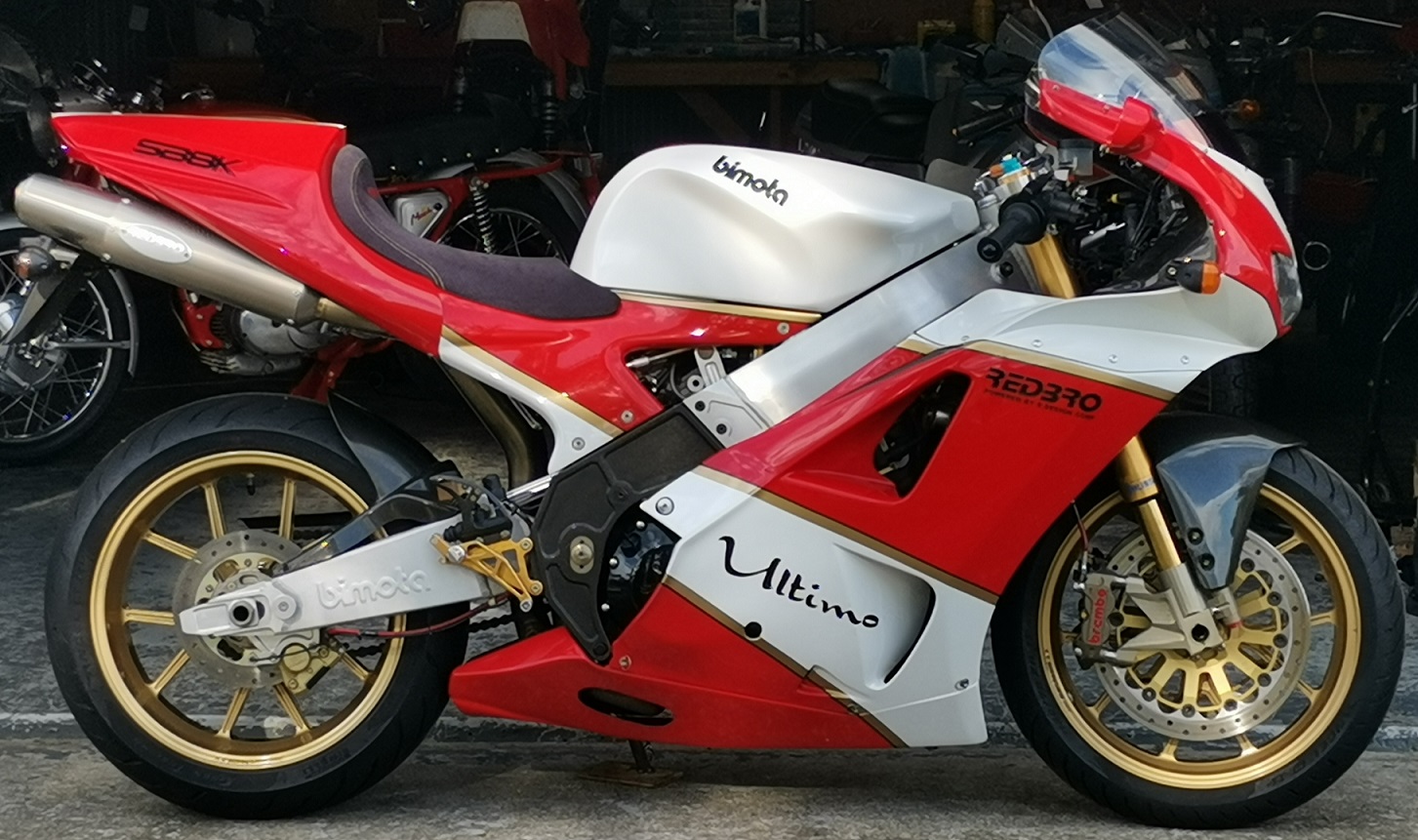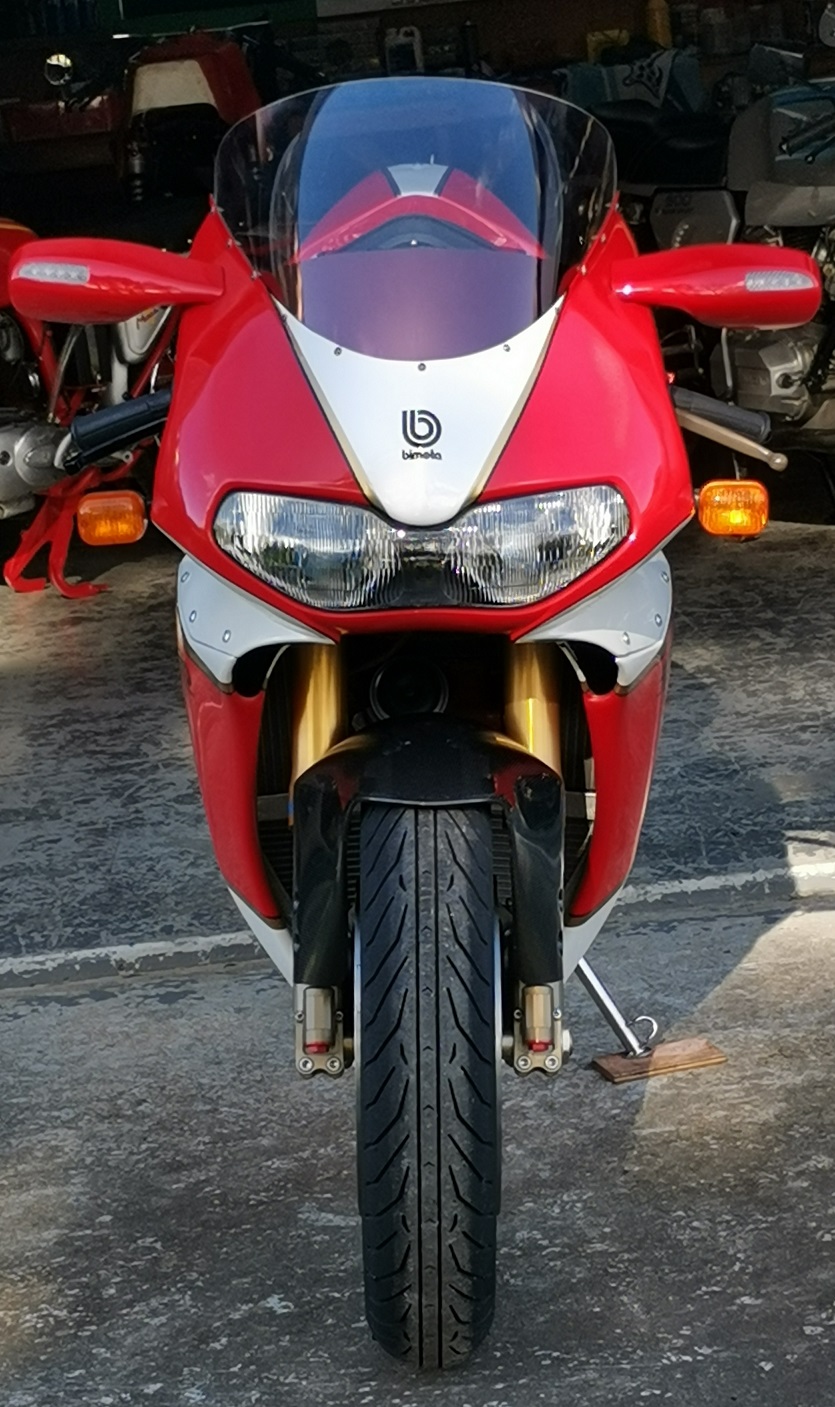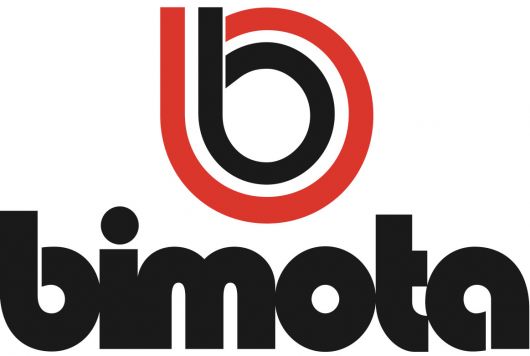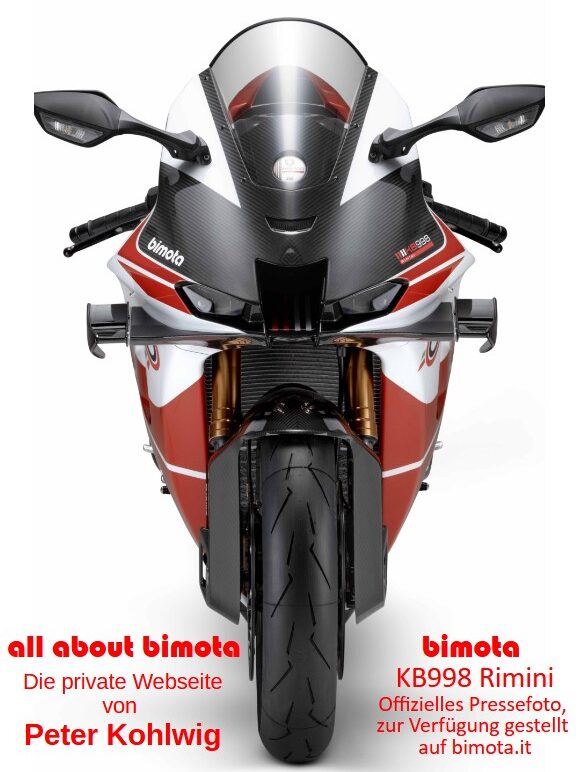
| Designer | Pier Luigi Marconi | Premiere | Milan 1997 |
| Production period | 2000 | Production numbers | 10 |
| Power | 109 KW (149 PS) | Displacment | 996 ccm |
| Topspeed | 260 km/h | Weight | wet 194 kg dra 175kg |
| Price | Colours | white / red / gold | |
| Technical basis | Suzuki TL 1000 |
Team Bimota Germany fielded the SB8R in the Endurance World Championship, competing in the 24-hour races at Spa, Oschersleben, and Bol d’Or, ultimately winning the title in the prototype category.
Building on this success, Bimota introduced the SB8K in 2000, a further development designed for participation in the Superbike World Championship. Australian rider Anthony Gobert was signed to race the bike. He secured victory at his home Grand Prix at Phillip Island, triumphing in wet conditions against the factory teams of Yamaha, Kawasaki, Suzuki, Honda, and Ducati. However, due to financial difficulties, Bimota withdrew from the championship mid-season and declared bankruptcy later that year.
Only 10 units of the SB8K were produced, differing from the SB8R primarily in visual and technical details. The most striking change was the redesigned, significantly narrower fairing, which eliminated the air ducts. While the engine remained unchanged, the Magneti-Marelli fuel injection system received optimized mappings. Combined with an adapted exhaust system, this increased power output by 9 hp to a total of 149 hp. The new paint scheme paid homage to the YB4, Bimota’s 1987 world championship-winning machine, but with a design featuring continuous lines reminiscent of the 1980s.
The SB8K shown in the photos does not represent the original factory-delivered condition. It is one of 10 units modified by Bimota’s Japanese importer, Red Baron, and sold as the RedBro Bimota SB8K Ultimo. The modifications were extensive, including higher-compression pistons, new camshafts with optimized timing, and a reprogrammed ECU. Additional upgrades included titanium exhaust silencers, forged magnesium Marchesini wheels, a new triple clamp, a redesigned cockpit, an Alcantara seat pad, and rearview mirrors with integrated LED turn signals. Each unit featured a numbered plaque (X/10). The final price for this exclusive package was 6,090,000 yen—equivalent to approximately 43,500 euros at the time.


Photos by Michael Hood, Dreamcycles Ltd, Warkworth, New Zealand

